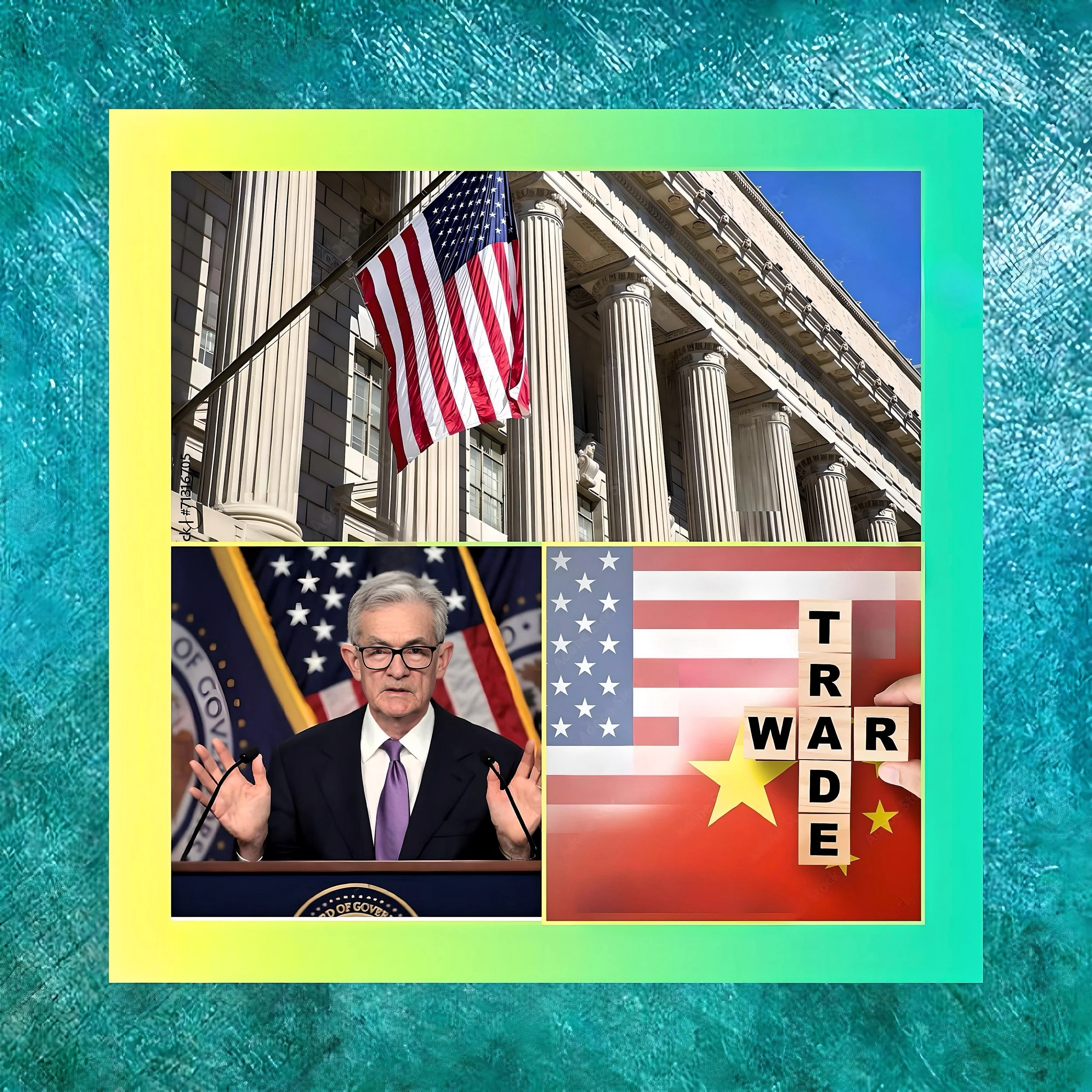The $7 Trillion U.S. Debt Refinancing Challenge: Causes and Economic Implications of Interest Rate Policy
Introduction
The United States faces an unprecedented fiscal challenge in 2025, with approximately $7 trillion of federal debt requiring refinancing amid a complex economic landscape.
This refinancing burden stems from a confluence of structural deficits, past fiscal policies, and cyclical economic pressures.
The Federal Reserve’s interest rate decisions will play a pivotal role in determining whether this refinancing process stabilizes or destabilizes the economy.
A lower interest rate environment could alleviate debt servicing costs and stimulate growth but risks reigniting inflationary pressures.
Conversely, maintaining current rates would exacerbate budgetary strain, potentially triggering market volatility and constraining fiscal flexibility.
The stakes for the U.S. economy—and global financial stability—could not be higher.
Structural Drivers of the $7 Trillion Refinancing Wall
Maturing Debt and Rollover Requirements
The primary immediate cause of the $7 trillion refinancing need is the sheer volume of existing U.S. Treasury securities set to mature in 2025.
Historically low interest rates in the early 2020s enabled the government to borrow cheaply, particularly during the COVID-19 pandemic response.
However, these debts—issued as short- to medium-term Treasury bills and notes—now require rollover into new securities.
With the weighted average interest rate on outstanding debt rising to 3.2% (a 15-year high), refinancing at current yields could add hundreds of billions annually to interest expenses.
Chronic Budget Deficits and Debt Accumulation
Underlying the refinancing challenge is the structural imbalance between federal revenues and expenditures.
The U.S. budget deficit exceeded 6% of GDP in 2024, driven by aging demographics (rising Social Security/Medicare costs), defense spending increases, and revenue reductions from the 2017 Tax Cuts and Jobs Act.
Even before accounting for new borrowing, the Congressional Budget Office projects public debt will rise from $30 trillion in 2025 to $52 trillion by 2035. This trajectory forces continuous debt issuance merely to cover ongoing deficits, independent of maturing obligations.
Monetary Policy Normalization Post-Pandemic
The Federal Reserve’s aggressive rate hikes from 2022–2023, which raised the federal funds rate from near-zero to 5.25%-5.5%, fundamentally altered the cost structure of government borrowing.
While these hikes aimed to combat inflation, they reset market expectations for long-term yields.
The 10-year Treasury yield surged from 1.7% in early 2022 to 4.8% by October 2023, meaning debt issued during low-rate periods must now be refinanced at significantly higher costs.
Economic Implications of Refinancing Under Alternative Rate Scenarios
Scenario 1
Federal Reserve Lowers Interest Rates
Debt Servicing Relief and Fiscal Space
A 50 basis point reduction in the 10-year Treasury yield (from 4.25% to 3.75%) would save approximately $35 billion annually on the $7 trillion refinancing. For context, each 0.1% rate decrease saves $7 billion yearly—funds that could offset proposed tax cuts or infrastructure investments.
Lower rates would also reduce projected interest costs on the broader $36 trillion debt stock, which currently consumes over $1 trillion annually.
Stimulus for Private Sector Borrowing
The Fed’s rate cuts typically transmit to consumer and business loans. A 1% reduction in the federal funds rate could lower:
Mortgage rates by ~75 bps, revitalizing housing markets
Corporate bond yields by ~100 bps, encouraging capital expenditure
Auto loan APRs by 50 bps, supporting durable goods sales
Historical precedents suggest such easing could add 0.3–0.5% to GDP growth within 12 months. However, this assumes inflation remains contained—a risky bet given recent commodity price volatility.
Risks of Premature Monetary Easing
Lower rates could undermine the Fed’s inflation fight, particularly if supply-chain disruptions from proposed tariffs materialize. The January 2025 FOMC minutes noted concerns that premature cuts might “halt progress on disinflation” if demand rebounds faster than supply. Moreover, artificially suppressed yields could reduce foreign appetite for Treasuries; foreign holders already reduced their share from 34% (2015) to 25% (2025), raising dependence on domestic buyers.
Scenario 2
Interest Rates Remain Unchanged
Escalating Debt Service Costs
At current 10-year yields of 4.25%, refinancing $7 trillion would add $300 billion/year in interest versus the 2020–2021 average rate of 1.5%.
This would push total interest expenses toward $1.2 trillion annually, exceeding Medicaid spending and approaching defense outlays. Such crowding-out effects could force austerity measures in discretionary programs like infrastructure or R&D.
Market Liquidity and Financial Stability Risks
Primary dealers, critical intermediaries in Treasury auctions, already hold $364 billion in unrealized bond losses due to rate hikes. Persistent high yields might:
Erode dealer balance sheets, impairing market-making capacity
Trigger margin calls on leveraged positions, as seen in 2020’s “dash for cash”
Accelerate a shift to risk-off assets, with gold reserves swelling 18% YoY as investors hedge currency risks
Contagion to Private Borrowing Costs
Corporate debt rollovers would face similar pressures. Over $1 trillion in BBB-rated corporate bonds mature through 2025, and higher risk-free rates could push junk bond yields above 9%, precipitating defaults. The Fed’s Financial Stability Report warns that 12% of publicly traded firms already lack sufficient cash flow to cover interest.
Strategic Policy Considerations and Unconventional Options
“Tariff-Induced” Yield Suppression
Some analysts posit that the Trump administration’s tariff escalations—25% on Chinese imports, 10% on EU automakers—aim to engineer bond demand through uncertainty. By stoking fears of growth slowdowns, tariffs could:
Drive investors toward Treasuries as safe havens, lowering yields
Create negotiating leverage to pressure trading partners into buying U.S. debt
However, this gambit risks retaliatory measures and supply-chain inflation, negating rate benefits.
Debt Maturity Extension
The Treasury could mitigate rollover risks by issuing more long-dated securities. Extending the weighted average maturity from 63 months (2024) to 75 months would reduce annual refinancing needs by $400 billion. Yet demand for 30-year bonds remains tepid, with foreign central banks preferring shorter tenors.
Federal Reserve Balance Sheet Tools
Reinstating quantitative easing (QE) could cap long-term rates, but the Fed remains wary after 2022’s inflation surge. Alternatively, yield curve control—pegging 10-year yields at 3.5%—would require massive asset purchases, potentially expanding the $7.4 trillion balance sheet beyond 2024 levels.
Conclusion
Navigating a Precarious Crossroads
The $7 trillion refinancing operation represents both a technical challenge for Treasury debt managers and a stress test for U.S. economic governance. Lower interest rates offer short-term fiscal relief but risk reanimating inflationary ghosts, while maintaining current rates courts a debt spiral that could destabilize global markets.
A nuanced approach may involve
Tactical Rate Cuts
75 bps reduction in 2025, focused on steepening the yield curve to aid banks
Targeted Fiscal Reforms
Sunset provisions on high-cost debt drivers (e.g., TCJA corporate cuts) to signal deficit resolve
International Coordination
Incentivizing foreign Treasury purchases via trade concessions, avoiding forced debt swaps
Absent structural fiscal reforms, even optimal rate policy will only delay—not resolve—the debt sustainability crisis.
As the 10-year yield’s 60 bps drop since January 2025 shows, markets remain hopeful for a soft landing. But with debt/GDP surpassing 120%, the margin for error has vanished. The path chosen in 2025 will echo through the U.S. economy for decades





